|
Score: 88+/100 (8.8+ out of 10)
Tic Talk is an inspired, spirited, and eye-opening book by Dylan Peters concerning the topic of Tourette Syndrome! This book seeks to remind the world that every child deserves a chance including those suffering from a disorder like Tourette's, a neurodevelopmental disorder that results in abnormal, uncontrolled movements and vocal sounds called “tics” (giving the book its title). It only takes one caring, patient, and understanding person (particularly an educator) to change a child's entire life. We saw that happen in Jar of Tears by Kathleen Templeton earlier this week in which a teacher, Mrs. Davis, was the first to recognize what the child (Mira) was going through, giving her a non-judgmental ear to express herself to. In Tic Talk, it's Mrs. Rita Sudalter who recognizes that there's more to Dylan than meets the eye. Mrs. Sudalter recognizes that there are underlying reasons for Dylan's otherwise-strange and unsettling sounds and actions. Rather than dismissing him, being annoyed with him, embarrassing him, or even punishing him, Mrs. Sudalter does what other educators failed or neglected to do: be understanding and give him a chance. Dylan was diagnosed with Tourette's at the age of four. As the book explains, the disorder causes Dylan to uncontrollably and unexpectedly jerk his head, gurgle, and clear his throat. This behavior seems strange or weird to some who view it as attention-seeking or annoying. However, the people who rush to these conclusions likely don't understand Tourette's or the fact that it is often out of the person's control. And that's where this book shines the most: in raising awareness and understanding of Tourette Syndrome, something which—quite frankly—few people in our society know much about. In fact, most people's views on Tourette's comes from YouTube videos and television shows in which Tourette's is often shown to be part of a joke or as comedic relief. The truth of the matter is, it's not always funny or humorous for people who actually suffer from the disorder. In fact, it can be saddening, maddening, and upsetting. If people only knew the truths about the disorder... that it's out of the person's control and that it doesn't make a person unintelligent, autistic, sick, bad, dangerous, or scary. The book even makes the point that Tourette's isn't contagious like a disease or rabies and that you can't get it just by associating with someone. Adults with Tourette's might even lead people to jump to the conclusion that they are on illegal substances (like drugs) when that's simply not true. Conceptually, this book is powerful, beautiful, and brilliant. There's a bit to be desired in terms of the execution though. One of the things that really sticks out are the illustrations, which were done by a childhood friend of Dylan named Zachary Wendland with some paintings by Kris Taft Miller. They do leave a little to be desire. However, we understand that Zachary is still young and working on his craft. We've seen images of Dylan and Zachary working together on this book (and promoting this book) as kids, so it's easy to understand why they chose this route: they're a team. From what we gathered, neither Dylan nor Zachary are kids anymore. In fact, we're told that Dylan has already graduated from high school with numerous honors and academic awards including a National Merit Scholar Award. He has probably graduated from college by now seeing as he entered college before the pandemic. That's really inspiring! And it goes to show that you can make lemons out of lemonade, as the book tells us. Your situation—good or bad—is what you make of it. The book also does a good job at demonstrating that we're all weird and different in our own ways, not just those with Tourette's. In fact, during a class lesson, the different students all talk about ways in which they are different. For example, one student is short-sighted and wears glasses. This is a very inspiring book that could be great for parents of children with Tourette's! It could also be a part of classrooms in which teachers could educate their students about it. Check it out on Amazon!
0 Comments
Score: 95/100 (9.5 out of 10)
Mount Tremper has a Temper by Thomas O'Grady & Karen Chapman is a children's book that captures the undeniable appeal of the Catskill Mountains in the state of New York as well as telling a beautiful and powerful story about uniqueness and individuality! The book centers around the titular Mount Tremper, one of the smaller of the Catskill Mountains (“not even in the top 100 highest”). Tremper is described as a small, tea-cup shaped valley surrounded by bigger mountains. You really get the sense of the oppressive atmosphere that Tremper lives in. It is personified as harboring some anger, frustration, and resentment (having a “temper”) at being smaller than the other mountains and, thus, being overlooked by visitors. It is notably excluded from the “3500-Foot Club” since it is less than 3500 feet in elevation. There is also a strong sense that Mount Tremper has experienced this exclusion and hard feelings for a long time since he is called “little old Tremper.” However, Mount Tremper is special, unique, and beautiful in ways that he has long overlooked. For example, Mount Tremper is home to many incredible plants and animals, namely squirrels, eagles, butterflies, rattlesnakes, ravens, deer, and even bears! It also provides one of the best hikes in the Catskills, which is great exercise. It is home to two lean-tos where people can camp when they visit. It even has its own rock quarry! We really enjoyed this book and learning about the Catskills! What we enjoyed the most about this book were the illustrations by Karen Chapman! They were some of the best of the season! In particular, we enjoyed the illustrator's animal art. The black bears are absolutely adorable and the rattlesnake is menacing yet cool. The raven and the squirrel are expressive as they react to Tremper's temper. We have a slight feeling that this book gained a lot of momentum, but never seemed to hit its stride. It took a while to get going, then ended rather abruptly. Maybe we were just enjoying it so much that we wanted it to go on for another 4-6 pages! When you look at the “Fun Facts” section, it really does seem like a lot had to be trimmed down either due to time or budget. There are a lot of things in that section that could have been expanded on and actually add some context to why Mount Tremper feels the way that he does. For example, the section talks about how Tremper's brother has a historically-significant fire tower while (we assume) he does not. And, as we said before, the description of Tremper being a “small, tea-cup shaped valley surrounded by taller mountains” is a much more impactful description than what is presented in the main section of the book. The other thing we noticed (and we're not sure if this is really a criticism) is that Tremper is probably the least cute and appealing of all the mountains that are personified. He has the face of an angry, obese middle-aged man for much of the book. This kinda makes sense because of his age, anger, frustration, and resentment. We were just wondering how children might respond (negatively or positively) to a character with a cuter or more appealing face. Really, though, it's not a big deal. This book is great, well-illustrated, and effective! Check it out on Amazon! Score: 87/100 (8.7 out of 10)
Your first camping or hiking trip can be quite an experience! You could be caught off guard by all the bugs, especially the blood-sucking mosquitoes. You could get your shoes wet in a stream and wonder if the fish swimming in it are edible or if they could nibble on you! You might wonder what kind of bird (or birds) you hear singing their songs in the trees. You might wonder if the berries you found are safe to eat or if they'll even be tasty. You might be a bit scared by the hooting of an owl or the howl of a coyote in the middle of the night. You might be mesmerized by the sight of fireflies as they light the night. You never know if you never try! This book is a reminder to step outside of your comfort zone and try new things. It also continues the main theme of this series, that of a little boy who is comfortable being himself and living his life because he always has the love of his mother and family looking over him and facilitating his activities. This series seems to champion a Montessori-like approach in which children are invited to explore and learn through choice and spontaneity rather than via rigid structure and strict direction (such as in most schools). This is arguably how younger children learn best, primarily via activities like playing games, manipulating objects/toys, and making art. This kind of learning is less structured and more free. Arguably, people learn better when they don't realize they're learning. Everything is easier when you're having fun. Everything means more when you choose it and have a say in it. With that said, the Do You See Me? series is arguably our least favorite of Tuula Pere's brilliant library of books. It might have a lot to do with the art style in these books. The illustrations look very simple and bland in comparison to the ones in Pere's other books. These illustrations aren't as appealing as other books in the author's library. However, that's not to say that there aren't some bright spots. For example, the owl and squirrel look good in this. The other thing about this book, specifically, is that it seems a bit unfocused, disjointed, and random. One minute, we thought this was a story about the boy trying to gather and eat berries, but the berries become inconsequential or even forgotten later on. The boy in this book does a lot in this book, but a lot of these activities seem unrelated or not tied into one plot or plot thread. In fact, you could argue that this book has no plot. Now, having no plot is not the same as having no point. The point of this book, as we explained, is to try new things, step outside your comfort zone, and to learn through exploration. Meanwhile, guardians/parents should facilitate this kind of learning by being present while not being controlling, insistent, or forceful. Parents/guardians should give their children choices and options of things to do and try. When a child is uncomfortable or scared of doing something, like swimming, a modification or accommodation can be made, like swimming in the shallow part of the water. Check it out on Amazon! Score: 95/100 (9.5 out of 10)
We are a lot of things in this world. We are human beings with life, dignity, and hope. However, perhaps the most important thing we are in this world is LOVED. To be loved seems so cliché, generic, and matter-of-fact that's it's easy to take for granted. But what does it really mean to be LOVED? Is love always kissing, hugging, and romantic sort of things? Or is love something else—something that can be both big and noticeable while also, sometimes, being small and easy to miss. It's true! Often times, love is in the little things: how we treat others, how we talk to others, cleaning for others, cooking for others, spending time with others, listening to others. Love is in the choices we make (or don't make). Love is in every fabric and layer of our most precious and valuable relationships. Love may be the most valuable thing we have alongside life itself. And that's what Of Course, I am Loved by Tamesha Williams is all about: realizing, recognizing, and acknowledging the love that's all around us and knowing that we are valued, significant, and important in the eyes of those who love us. That might seem like a lot to swallow, but it's true. Many times, we just don't realize how much we mean to people and how much love we're surrounded by. This book follows a little boy who hears his family members use the word “love” all the time. Yet, he isn't quite sure what it means. Meanwhile, there are a lot of demonstrations of love shown throughout the book. For example, his family makes a lovely breakfast for him, even giving him a choice between eating eggs, pancakes, and oatmeal. How blessed this kid is! He's so fortunate! His dad puts aside his need to watch a show on TV to let the boy play his drum, knowing how much it means to him. His grandma cooks for him and even reads a book to him. When he spills his juice, presumably, his family helps to clean up after him. One thing that's both noteworthy and humorous about this book is how oblivious the little boy is most of the time. However, that only leads to the big arc: him realizing the meaning of love and how loved he is. One last thing that we'd like to commend are the illustrations. They are pleasant. We love how hand-drawn, hand-colored, and genuine they look, matching with the caring theme of this book. Check it out on Amazon! Score: 93+/100 (9.3+ out of 10)
Mankind's negative impact on the Earth has been considerable. Plastics pollute our oceans. Greenhouse gases have pummeled our ozone layer. Resources are constantly being depleted and even wasted. Not only are we hurting the Earth, but we're hurting ourselves, depriving future generations of a healthy planet and future. Meanwhile, as this book reminds us, we're ruining the habitats and lives of all sorts of incredible creatures throughout the world including amazing bugs, birds, mammals, and fish. We can do better! Soar a Burning Sky by Steven Michael Beck is a reminder of that. It emphasizes humanity's impact on their planet and the unique, irreplaceable animals that inhabit it. It challenges us to consider what is and what could be by presenting us with two very different worlds: Earth (if we stay the course now and continue to ruin the planet) and EonThera—a marvelous world parallel to Earth that's co-dependent on its survival. This book follows Max, Woo, Danny, and Piper who are summoned to the aid of EonThera and Earth via an alluring dragonfly sent by T'Aura, a lynx/feline-like shapeshifter who, as a kind of protector or guardian, is concerned about the survival of the two realms. T'Aura is a prophesied figure known as the “Nether Child” who stands as the realms' hope against a powerful, coming threat, that of StormWing--King Lor Vecca—who is part-Sauron, part-Henry VIII, and part-Hexxus from Ferngully. Similar to Hexxus, StormWing is the personification and manifestation of mankind's worst and most reckless characteristics. He is power-hungry, greedy, selfish, and ruthless. However, strangely, we wouldn't quite call him pure-evil. There's something frighteningly understandable, relatable, and familiar about him, and that's perhaps the point. StormWing is like the many politicians, lobbyists, and oil corporations who champion the drill, baby, drill ideology. There's actually some sense to this ideology, especially in the short term. However, what happens to our planet 100 years from now? 200 years from now? A thousand years from now? Will the planet still be livable then? Our choices and actions have consequences. Shouldn't we start making good decisions today? This book is similar in both thematically and content-wise to several that we've read, particularly Dyami and the Gobi Crystal by Maria Hoshaw and Dar & Earth I & II by Athena Kaiman. All of these books feature two mirror dimensions or worlds: Earth & a magical realm of some sort. All of these books feature an angelic/fairy-like female protector looking out for these worlds and having to convince humanity to do the right thing, mainly to stop polluting, releasing greenhouse gases, and depleting natural resources. All of these books feature either subtle or explicit calls to combat climate change, global warming, and/or human-caused pollution and resource depletion. However, Soar a Burning Sky seems to set itself apart and stand out in one key way: its emphasis on animals and wildlife. This book focuses heavily on the different creatures that live on Earth (and EonThera) including bugs, bugs, birds, mammals, and fish. There's even a dinosaur (spinosaurus) in here! Something we appreciated about this book is how it actually confronted a lot of the common fears and phobias that people have of certain kinds of animals. For example, spiders and snakes are commonplace in this book. These are two of the most feared animals in existence. However, the narrative of the book reminds us that all life on the planet has value, meaning, and—shockingly—even beauty. Yes, that applies to spiders, snakes, and—when they were around—dinosaurs. Don't forget that bugs, as scary as they are to some people, are a source of food for various other creatures. Snakes come in all kinds of colors and sizes. Some are brilliant and vibrant. Many are completely harmless. This book reminds us that we share a world with these creatures and that many of them are more afraid of us than we are of them. In a lot of ways, we're the big, scary, destructive, deadly creatures, not the other way around! Now, this book does suffer a little bit from being so heavy-handed. It can also drag quite a bit, especially with so many major and sub-major characters (rather than one or two). There's also a lot going on. Not only do we have the central issue with T'Aura and StormWing going on, but we have sky pirates, Seneca's issues, Li Fang's issues, whatever was going on with the pseudo “domesticated” spinosaurus, and all-around wildness and wackiness. Indeed, this book gets pretty wild and wacky. It also seems to get really overly-detailed and into the weeds about scientific information, especially zoology, meteorology, and biology. For example, there's this part where the author just starts talking a lot about lightning for some reason, and it seems to drag and drone on and on, interrupting the pacing. There are times when the book just generally seems to lack focus. Part of that is just shifting focus between all of these major characters. We thought this was a book about shapeshifters, like Animorphs, experiencing what animals in nature experience while on the way to solving a problem, but that aspect just got so overshadowed by everything else that was going on that it became secondary. However, this book does have one other saving grace (aside from its great concept and message): the writing. There are some beautiful passages in this book. For example: “The rain gives birth to the rivers, that gives birth to the oceans, that gives birth to the land, that gives birth to the sky, that gives birth to the rain . . . “ This passage emphasizes the cyclical nature of, well.. nature. “Trust the Ticking...A sense of resolve worked its way through her chest, down her arms, and into her fingers. She needed to decide and decide now. While there was still time. It was time to trust something other than fear.” “...doctors stopped counting when the stitches reached a hundred.” "...something so monumentally important can be held aloft by something so fragile.” “Because we need each other, that's why. It's that dependency that gives harmony to the song of our existence.” This book has yet to be released. Score: 90/100 (9.0 out of 10)
Nurse Florence, What is Endometriosis? is yet another ambitious medical-themed children's book by Michael Dow. This specific book tackles the subject of endometriosis, something which can be a touchy, uncomfortable, or even scary subject to young people enduring or experiencing puberty, specifically girls and young women. However, like asthma (the subject of Dow's previous book), endometriosis isn't a foreign, alien, mysterious thing that only affects a few unfortunate people, it's actually a common condition that affects millions of women around the world—about 10% of the female population! So, realistically, this is a very important subject to a whole lot of people! This book follows Jean, Condi, and Sonia, three curious (some would say precocious) students who frequently appear in this series in one iteration or another. Similarly, Nurse Florence appears, as she does in every book in the series, however, she takes the form of middle-aged Caucasian woman (in the previous books, she was a woman of color). This indicates to us that Nurse Florence isn't necessarily one person but an amalgamation of people who represent and embody Florence Nightingale, the mother of nursing. This version of Nurse Florence addresses a prompt that the girls present her about a problem that only affects women. The nurse is then able to provide a lot of enlightening and invaluable information about endometriosis, a condition in which, during the process of menstruation, tissue like the lining of the uterus leaves the uterus and grows outside of it as scar tissue, causing pressure and pain. The nurse is able to go over six causes of endometriosis: retrograde menstruation, hormones and immune factors causing endometrial-like cells to form outside the uterus, embryonic cells transforming into endometrial-like cells outside the uterus, surgery in the reproductive area, an endometrial cell being transported through a vessel outside of the uterus, or an immune system disorder. She is also able to explain which populations are more likely to get it (such as women who've never given birth, heredity, or people being exposed to estrogen for a prolonged time), different ways doctors test for endometriosis, and some ways to alleviate its symptoms like pain medication and a warm bath. There are also some scary consequences to endometriosis. The one that stood out to us is never being able to have kids. We'd say that this book is decent and provides a lot of important information. It has some issues, however, that have existed since the first Nurse Florence book we read (Nurse Florence, How Do We Grow?). First, the author seems to struggle with storytelling, dialogue, and establishing proper character motivations. Characters need motivations. There needs to be a reason why the characters are so interested about a particular topic. It's awkward and weird when some kids walk up to some lady and ask her to talk to them about an issue that only affects women. Wouldn't it make more sense if one of the girls was just starting to menstruate and was experiencing cramping, so the girls—being good, caring friends—ask the nurse about it? Now, in Nurse Florence, What is Asthma?, the central character, Jean, had a motivation to ask the nurse about asthma, it's because she was suffering from it. In fact, it was affecting her ability to keep up with her friends in physical education and sports. So, we could understand why she would ask the nurse about it. What motivation did these girls have to just randomly sprout this “women's issue” prompt on Nurse Florence? Doesn't that seem forced, contrived, and unnatural? Did they all just have nothing better to do? Kids love to play video games, ride bikes, and compete in sports. Some of them love to read. Most kids don't walk up to a school nurse and ask them to take time out their day to talk to them (presumably for 30-60 minutes) about a condition we have no idea they suffer from or not. There's a quick and easy fix: have a restroom scene, cropping the private parts out (of course), in which one of the characters is menstruating and experiencing pain, perhaps even calling to a friend in another stall about it. That solves this core issue. Another issue is that most people who read this book will be young women who may be experiencing endometriosis and want a solution to help alleviate their pain (and possibly panic). Well, the solutions are relegated to the very end of the book, and they're quite sparse. It might have been better if the nurse had identified the problem one of the girls was having EARLY in the book (perhaps in the first 10 pages) and then was able to get permission from the girl's parents to give her ibuprofen. That's another quick fix. Doesn't that make more sense? A third issue with this book is that the dialogue is still clunky and strange. It isn't formatted properly. When multiple people are talking in dialogue, you're supposed to create a new paragraph for each new line of dialogue. Well, in this book (like the other Dow books we read), all of the dialogue is clumped together in one block of text. This can make it difficult to distinguish between who is saying what. The framing of each of these books is also a bit weird. Instead of us being naturally introduced to characters doing stuff, the author always introduces them like they're in a stage play (and not prose) with a “Background” page that sets the scene. We'd advise against doing this because it's not really a way to endear us to the characters. Instead of having a “Background” page, just introduce us to the characters as they appear and as the action is happening. Nurse Florence, What is Asthma? worked, despite its far inferior illustrations, because it kicked off with the central character actually doing stuff, trying to perform well in P.E. despite a condition affecting her breathing and energy levels. Why couldn't this book have started out in a similar way? Maybe with Sonia experiencing cramps during dodge ball or something. Maybe she doesn't get to first base or home because the cramps are so bad. Isn't that so much more exciting and interesting than three girls finishing class and randomly deciding to ask a nurse a seemingly random question? We talked about the illustrations, and these might be the best in a Nurse Florence book in terms of quality. However, we would argue that the illustrations don't seem to fit the subject and feel of the book. This style would fit more in a more sophisticated book about traveling to Paris or protesting for human rights, but this is a children's book. It's supposed to be soft and smooth. This book is supposed to be covering a rather painful, uncomfortable, and scary subject for girls. However, we're presented with the least comforting, least appealing, and most scary-looking Nurse Florence yet. The other Nurse Florences had soft, inviting, welcoming, and comforting features. This one has wild, red, wiry hair and a million-yard stare that pierces your soul. Most disturbing of all, she has this really creepy, unsettling smile that never goes away, even when she's talking about the frightening consequences of endometriosis. Shouldn't she look a little sad or have a frown while talking about never being able to bear children? At least the three other characters look great, but it's just the same image of them used throughout the book. With that said, again, these are probably the best illustrations in a Nurse Florence book. Lindsay Roberts, the illustrator, is far and away the most experienced (and arguably skilled) artist in the series so far. However, we're not sure if the style really fits the target demographic. It also brings up another issue: there is so much inconsistency and lack of continuity in this series. Every book in this series features a different Nurse Florence, a different Jean, a different Sonia, and a different Coni. Every book in this series features a different artist with a completely different style, usually one that's jarring or clashes with the style of the previous book. Could you image a 23-episode animated series that changed its animation style every episode? Wouldn't that drive you nuts? There is such great information in every book in this series, and the concept is great, but the execution is hit or miss. There are so many ways in which books in this series could be easily improved: have characters with continuity and motivations rather than changing them every time, hire one illustrator with one style to illustrate the whole series, and either write in proper prose or have a skilled, professional ghost writer do it. In film-making, there are people who produce, people who do the screenwriting, and people who direct. Similarly, in publishing, there are writers, editors, and illustrators. It seems to us like this author may be a producer—someone with an awesome idea and concept but who should really put the execution of that idea and those concepts into the hands of people who can make them work. We want to see this series succeed because it covers topics that are important to the health, safety, and education of young people. Check it out on Amazon! Score: 95/100 (9.5 out of 10)
Journey to Wholeness is an excellent self-help, Christian book by Sarah Moon! The subtitle of the book (Healing the Past, Embracing Change, and Learning to Let Go) reflects the nurturing, comforting, healing nature of this book. However, it's so much more than that. This is a book about being a better person, being a happier person, and living your best life—the life that God intended for you. This is a book about attracting happy, positive people into our lives. It's a book about nurturing positive thoughts and feelings. It's a book about looking at everything from a different lens and from a different perspective from what we're used to. It's a book about learning from mistakes rather than letting them defeat or destroy us. It's a book about letting go of self-destructive feelings like envy, jealousy, and resentment. It's a book about controlling the controllables and leaving the rest up to God. In a lot of ways, this is a self-help book with a similar feel to something like The Stress Book by Dr. Terrence Foster or The Power of Wholeness by Dr. Verlaine Crawford, however, is far more condensed and concise. Author Sarah Moon's story, though mostly in the background of this book and not expanded on, stands out as incredibly compelling and inspiring for the amount of time it is given. Both of her parents passed away from illness within months of each other. Having immigrated from Brazil to Utah, USA, Moon was forced to go back to Brazil and pick up the broken pieces of her past (in a sense). So, Moon presents this information as someone who has walked the talk—as someone who has remained positive and trusted God despite all the slings and arrows that life could throw her way. This book is not just inspiring, but it is also quite well-written and eloquent, although there are a few missing words and small errors here and there. Some of our favorite quotes are: “I’m attached to nothing and open to what life brings.” “Just very different perspectives. Same movie, just different optics.” This quote regards how some people view situations differently—a fan of romance would focus on the romantic aspects of a film while a history buff might focus on the historical accuracy (or inaccuracy) of it. This doesn't make one right or the other wrong, it's just a matter of looking at things from a different lens. “Do you let a pebble on your path stop you from finishing the journey? Pebbles can be stepped over, rocks give you a better view if you use it as a stepping stone to see what is ahead and bolders[SIC] develop muscles or the ability to go over, around it or explode it out of the way. To some, a pebble is all it takes to destroy focus. Don’t let it be you! A pebble sinks into the ground if you step on it. No other thought should be given to it!” “Resentment is like drinking poison and then hoping it will kill your enemies.” (Credited to Nelson Mandela) “Dreaming with God is the same as entering a miracle factory and running the place for our profit. Pleasures come in many ways.” “Perspective is truth wrapped in emotions.” “...you ask 'What if I fall?' Oh but my darling, 'What if you fly?'” (Credited to Erin Hanson) This book packs a punch in less than 200 pages, similar to something like No Perfect Love by Alyson Nerenberg. Check it out on Amazon! Score: 92/100 (9.2 out of 10)
Raspberry Red joins Tuula Pere's phenomenal line of anti-war children's literature that includes former award-winning books Mother's Bread Dough and Between the Walls. Ironically, it also fits right in with the plot of the Pere book that we just read, Lullaby of the Valley. This book follows a little girl named Aino who lives in a town that is in the middle of an active war-zone. Aino is an innocent victim of this war over which she has no say or control. The conflict impacts where she can safely stay/live, the foods she can eat, or even the things she can keep and bring with her. Case in point: her prized red-caped doll which her grandmother crafted for her. In the climax of this book, Aino encounters two enemy soldiers. In her haste to hide and run from them, the prized red cape is torn from her doll and falls in the snow. While Aino escapes, she escapes without her doll's red cape. Fleeing the warzone and becoming a refugee, Aino doubts she'll ever get the cape, her most sentimental item, back. However, in a beautiful twist, one of the enemy soldiers who is—we can assume—empathetic to her, finds her cape and hangs it where she can find it. They even spare her playhouse (though they cause a lot of other destruction). This book has a really beautiful and powerful message about looking at the things we have in common rather than what sets us apart—humanity in the midst of a horrific situation like war. There are certain things that bring us together, like the love of a grandmother, or a child's toy. The fact that the enemy soldier recognized how valuable the cape was without having to be told is one of the most powerful moments we've experienced in literature. We'll say that we liked the illustrations (by Georgia Stylou) a little more than those in Lullaby of the Valley, mostly because they were more colorful and generally appealing. That seemed necessary since the book had to highlight the redness of the cape, which is a major plot device. However, the illustration can be off-putting at first, especially getting used to the Bratz-doll look and style of the character design. However, it kinda fits. Since this book centers around a girl and her doll, it kinda makes sense that the character herself would look like a doll. It is also a bit wordy for a children's book, but we won't hold that against it too much. What we did notice is that, because of the wordiness, the text had to be smaller, which can make it a bit hard to see. However, this isn't as extreme a case as we've seen before. We really liked the presentation and message of this book. Check it out on Amazon! Score: 96/100 (9.6 out of 10)
If you don't already know, a 9.6/10 is the highest score we've ever given a book of any kind. Well, this phenomenal book and this extraordinary author definitely deserve that high honor! Leadership Anatomy: Deconstruct Theories for Victory is an absolutely phenomenal, ambitious, comprehensive, and enlightening book by Satpreet Singh! While focusing on the topic of leadership, particularly in regards to business, this book crosses several other genres including self-help, reference, sociology, economics, history, and even psychology! This is truly an exhaustive, encyclopedic look at all facets of leadership, looking at the topic from every angle—from every nook and cranny! And, we have to say, it was both a pleasure and an honor to read! Where do we even begin? Well, the author chooses to literally start from the beginning, using example from history: from ancient times and antiquity. Ultimately, since human beings have started forming group, we have always needed leaders. It's natural for a group to have a leader (or leaders), whether they be a chief, a lord, a king, a CEO, or a president. Groups of people are naturally inclined toward having someone who is large and in charge. And there are various good examples and bad examples of leaders throughout history. There are good leaders like Abraham Lincoln and Maharaja Ranjit Singh, the father of the Sikh Empire in Punjab. It's incredible how the author was able to educate us about various great leaders from the part of the world that he grew up in, something which is less familiar to a western/American audience. We weren't perturbed by this at all. In fact, we welcomed it! We were impressed by all of these great leadership examples that we'd never heard of beforehand. For example, the author was able to talk about Bhai Kanhaiya Ji, a Sikh leader who embodied the cardinal trait of empathy. The author is then able to switch immediately back to a more familiar figure like Martin Luther King Jr. and how he embodied another cardinal trait: vision. The author is also able to talk about someone like Sardar Jassa Singh Ahluwalia, who helped to lead Punjab through a period of division and turmoil, as an example of both a charismatic figure and as an example of the laissez-faire leadership style, one of the many leadership styles that Satpreet Singh discussed. Some of those leadership styles include autocratic, democratic, laissez-faire, and transformational. You would think that one of these leadership styles would be superior to the others, however, that's not true 100% of the time. In a time of crisis, war, or during an emergency when quick, decisive decision-making is paramount, the often-vilified autocratic style might actually be best. However, under autocrats, people can be afraid to share new ideas and thus innovate. It can also lead to abuses of power like with the many genocidal tyrants throughout history. Often times, a laissez-faire approach can be preferable as it nurtures a sense of freedom, autonomy, and involvement while also encouraging creativity and innovation. However, along with the democratic style, it can be slower and can even become chaotic. The transformational leadership style is something that really intrigued us, as it was probably the one we knew the least about. A transformational leader is usually someone with great charisma who can compel or convince people to change their way of thinking and acting, toward shared visions and values. Jesus might be an example of a transformational leader as the founder of a new religion. You heard us briefly talk about cardinal leadership traits with regards to Martin Luther King Jr. and Bhai Kanhaiya Ji. Well, there are different levels and kinds of leadership traits that the author discusses as part of “Trait Theory” including cardinal traits, central traits, and secondary traits. Trait Theory is one of many leadership theories that the author explores and deconstructs throughout the book, alongside things like the Great Man Theory, Contingency Theory, Behavioral Leadership Theory, Vroom Decision-Making Theory, and more. What's great is that the author doesn't present any of these theories as 100% factual or 100% true 100% of the time. However, he still gives them their day in the sun and provides the information for you to read and analyze yourself. The Great Man Theory, for example, is extremely interesting and fascinating. A part of you wants to believe it. It can be inspiring to think that you could be one of those great men who, someday, could remembered for changing or shaping history. However, what about the women? And what about the billions of middle-class and working-class people working nine to five jobs, making the economy go 'round. Should their bosses and business executives get all the credit? Should a president or general get all the credit for winning a war when their soldiers poured their literal blood, sweat, and tears into fighting it? When you think about it like that, even a great theory like the Great Man Theory can come into question. The author did as good a job as humanly possible at staying as unbiased as possible. There were also many other fascinating topics discussed in this book like nature versus nurture, emotional intelligence, adaptability, nurturing a growth mindset (instead of a fixed one), strengthening your vision and strategic thinking, encouraging innovation, empowering people, and gaining/building trust. These aren't just things that can help you in leadership or business, these are things that can help you in your everyday life! Check it out on Amazon! Score: 85/100 (8.5 out of 10)
Born Mistakes by Mika Mathews is a novella with tremendous promise and potential. It follows a new father named Davis who is wrestling with the stigma of having a child out of wedlock with few resources in addition to his own personal demons. Joining him is Deven, an old classmate who comes back into his life as a hot mess, near-homeless, hopeless, and directionless. This short book had the potential to be an incredible LGBTQA+ story. The pieces were all there. The premise was great. Heck, the blurb is straight fire. However, this book has several problems. First of all, because it is so short, it also feels extremely rushed. Even though there are discussions of the two main characters having known each other in school (and, thus, have a bit of a past), there isn't enough time to elaborate on these things. There's not enough time to flesh this relationship out and make it feel earned and legitimate. One minute, these two are on their own, the next minute they're living together with only one character (Mitchell) pointing out that this is a bit odd and questionable. Another thing that was a bit bothersome were the names of these characters. One of them is named Davis Johnson, and if you know anything about a popular channel called MrGo30, you'd realize how hilarious this name is. It's like calling a character “Smith Black” or “John Doe.” However, the main problem with Davis's name is that it looks and sounds way too much like the name of the other character, Deven. The names start with the same letter and are the exact same length (five letters). Why is this such a big deal, you might ask? Well, it's because it's way too easy to get these two characters mixed up. It can be needlessly confusing. It seems like the author has a thing for main characters whose names start with “D” (like Dante from their main series), however, this is a case where the author probably should've parted with that idea. It's too problematic to have two main characters who have names that are barely distinguishable from one another. So many times, we had to stop and quiz ourselves: Wait, which one is Josiah's dad? Which one has the depression? Which one is vegan? Which one doesn't eat and possibly has an eating disorder? Which one got abused and had to go into foster care only to turn 18 and not qualify? Which one is bisexual and asexual? Which one has the issues with child-protective services despite clearly having sole-custody of the child? Well, it turns out that both have had issues with child-protective services. However, the answer to most of these questions is usually DEVEN. For some reason, Deven is the one who has most of the baggage. Deven is the damsel in distress who needs to be saved, possibly from himself. What makes us say that? Well, Deven reminds us of that person who loves to whine, complain, and blame everyone else for their problems. We have no love loss for Deven, which is unfortunate because the reader having sympathy for him is the crux of the entire book. Without sympathy, Deven has nothing and is nothing. That's true both in literary terms and in terms of the life of his character. He seems like a self-pitying person who thrives on the sympathy of others feelings bad for him. We know that might sound harsh, but it's true. We don't sugarcoat things. We provide constructive feedback. You shouldn't just give all of your problems to one character and turn them into a walking manifestation of mental illness. Give them one mental illness, then have the other things about their character branch out from that. Instead, Deven comes across as a problem. He comes across as trouble. He comes across like a ball and chain or an anchor—a liability. If you pay attention to some of the things that Deven claims (and how he claims them), he comes across as sketchy. Now, this was clearly not the intention of the author as Deven is eventually able to summon the guts to do something brave and heroic. However, for much of this book, he reminded us of the crooked, evil twin brother from Secrets in the Mirror by Leslie Kain, the one who became so dependent on drugs and possessed by his inner turmoils that he disrupted the lives of his own family to get what he wanted. Deven explains his dysthymia (low-grade depression) not just once but twice in a book that's only 70 pages long. He explains it twice in a span of 20 pages! Do you know what that tells us? That tells us that he is needy, self-pitying, craves attention, and uses this sob story like a tool to get what he wants—ultimately favors from people like Davis. You can just tell that he tells this same sob story to people all the time. Among the other suspicious things that Deven talks about are his domestic abuse, veganism, potential eating disorder, and the cloudy circumstances under which he was kicked out of his family. Now, although the ending makes it rather clear that his parents resent him, you can't help but wonder as an outside observer—is Deven not at least somewhat responsible for this problem? Think about it. What if Deven's parents were actually trying to help him before all of this occurred? What if they were trying to feed him after he'd started playing around with cult-like ideas like fasting and extreme dieting? What if they realized that he was starving himself or was becoming sick due to the way/things that he ate? What if they were trying to get him to take his antipsychotic medications or antidepressants, but he was straight-edge (against medicine) and refused? What if they were trying to get him professional help, but he instead refused and continued to be a menace to society? What if they gave him an ultimatum: fix your act, start eating normally, take your medications, get professional help, or get out of here and never come back? We've been there. We've seen it. This is what an intervention sometimes boils down to. You can love some people to death, but it's ultimately their choice of how to live their life and what to do with it. Sometimes, you've gotta tell them: the door is open, go live your life the way you want and suffer the consequences, just not under my roof. For example, imagine having someone in your household who repeatedly harasses and threatens people online, so much so that it becomes criminal and the cops keeping coming to ask them to stop. Would it be immoral to then say: either you stop harassing and threatening people, or you get the hell out of my house? It happens! That doesn't make the parent bad or evil, necessarily. Likewise, that doesn't make the person who got kicked out an innocent victim all of a sudden. There are two sides to each story. Remember: Deven called CPS on his parents three times. We aren't told specifically why he did this, only that he claimed abuse. CPS did not see evidence of this, at least the first two times. What if it were one of the scenarios we described above? Through the things he said, Deven actually gave us all the ammunition we needed to think that was possible (if not probable). Now, it's clear that both Deven and Davis are gay (well, actually, Davis is bi and Deven claims to be gay and asexual). So, what if Deven were kicked out for being gay? Now, that would be messed up. However, like we said before, we think there's more to this than meets the eye. We think there's more to this story than Deven just being gay and being kicked out. He obviously had other issues and problems. The way that he talks about and demeans his parents, even criticizing their weight and eating habits (which has nothing to do with any of the abuse he claims they inflicted on him), highlights the fact that he may not have been such a good son. In fact, he may have been downright vile—someone who likely caused a lot of conflict in the family, and only now is playing the victim because it endears him to Davis. On that note, remember when we said that Deven claims to be gay and asexual? Well, believe it or not, that just gives us another reason to be annoyed with him. Why? Are we homophobic or something? No. It's because this tells us that Deven is willing to court and pursue a relationship with Davis knowing full well that he can never feel what Davis feels and that he can never give the intimate, passionate love that Davis wants. In that sense, he's kinda like Christopher Dunn from Search for Completeness by Stephen Hardy, a frustrating character who is passionately loved by all of the other major characters, yet who friend-zones all of them because he refuses to feel what they feel. Poor Davis! He's stuck providing food, housing, and emotional support to a walking, self-destructive bag of problems who can never give him the intimacy that he deserves. Anyway, we've put a lot of thought and effort into reading this book and providing constructive criticism. It's because this book has all the pieces it needs to be great, they just aren't in the right order or given enough time to breathe. If you're curious about what we're talking about, check it out on Amazon! |
Archives
July 2024
Categories |
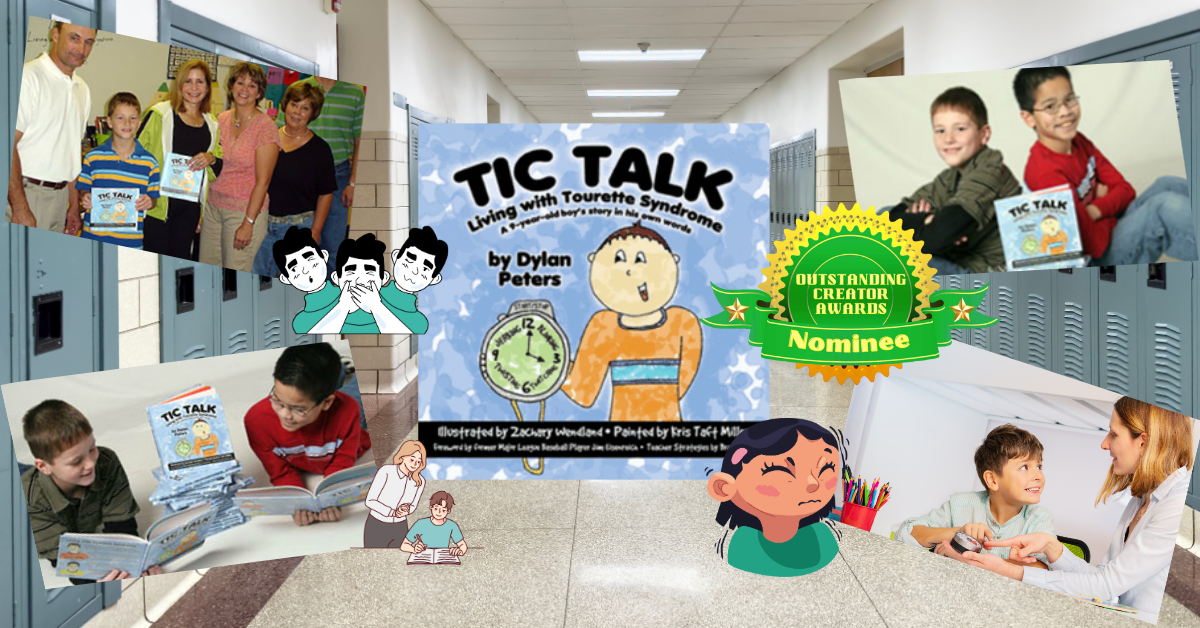
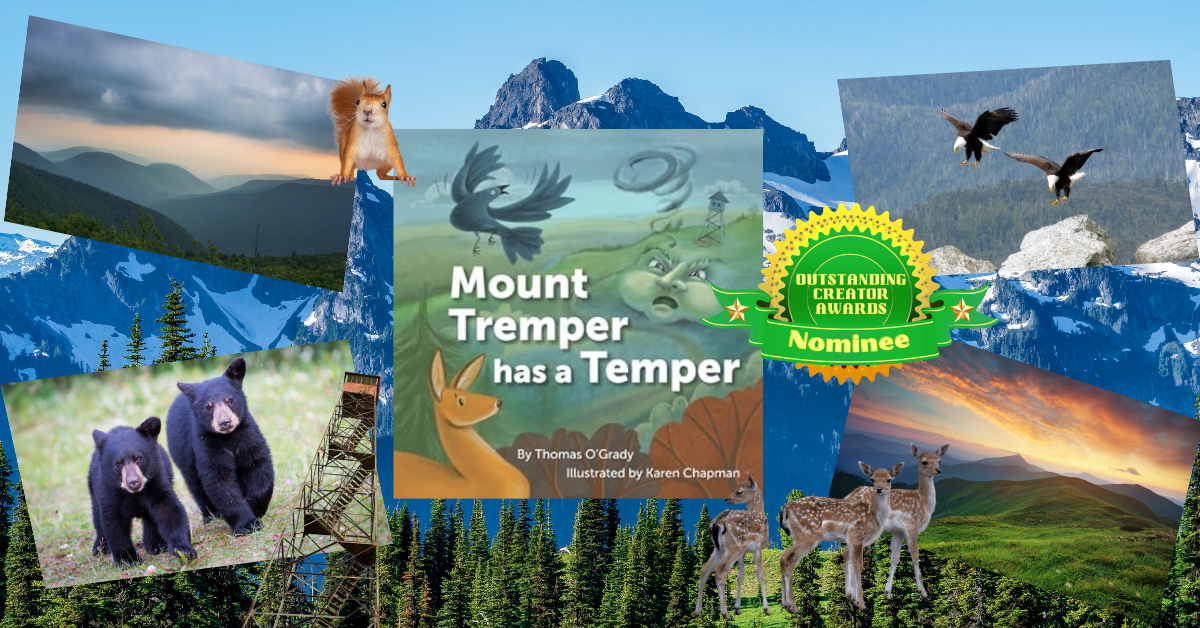

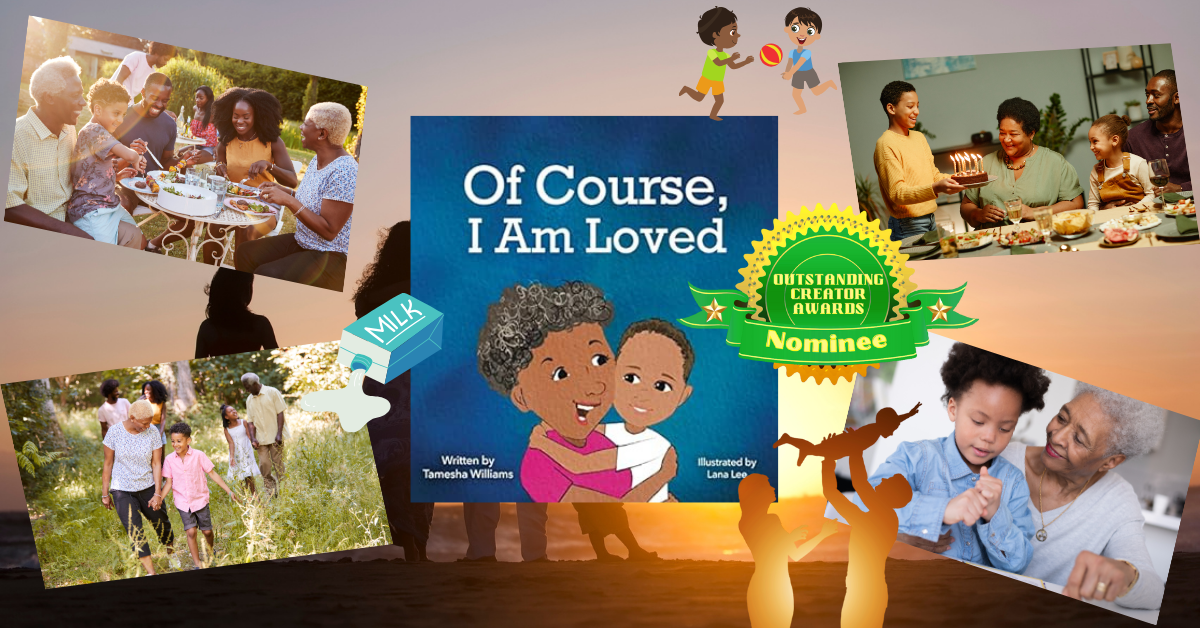



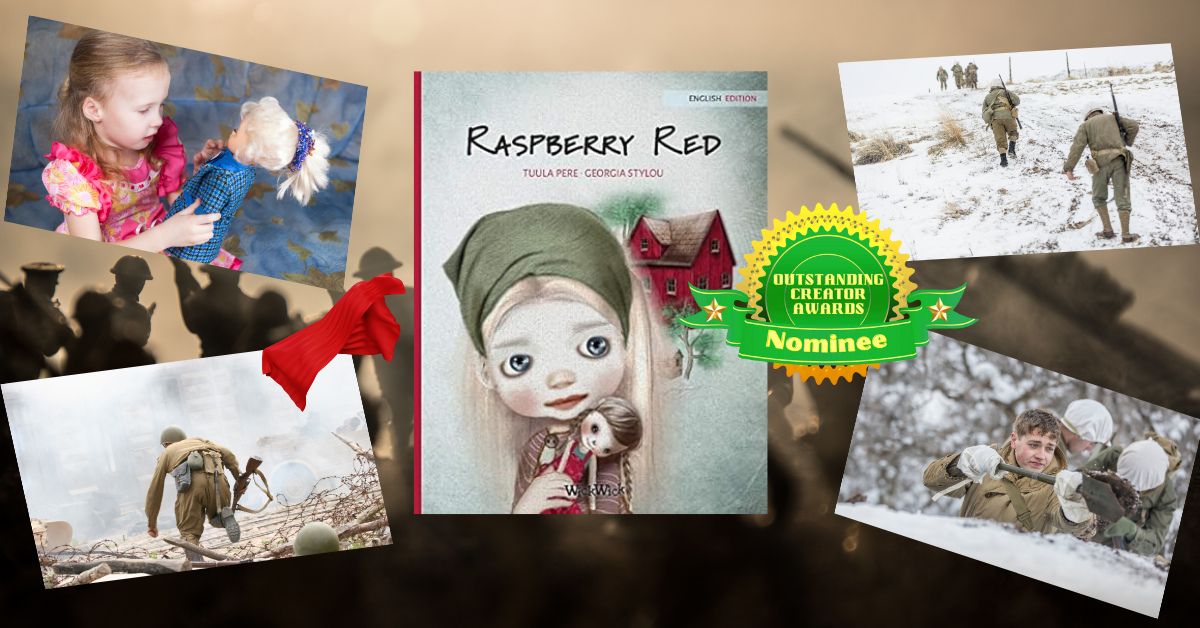
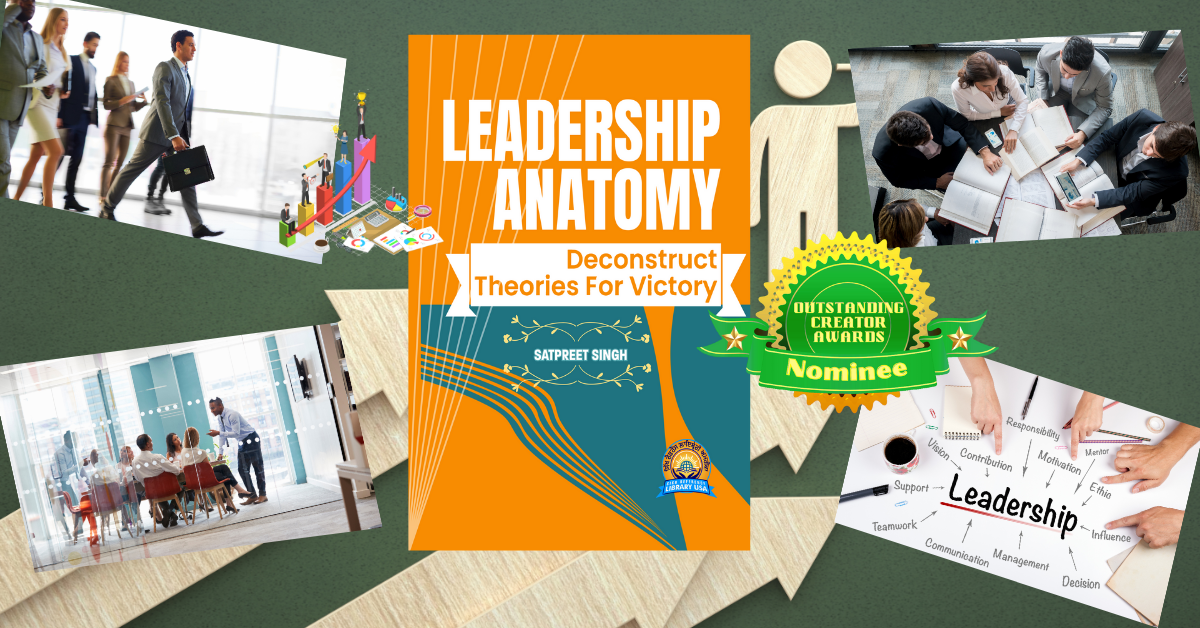
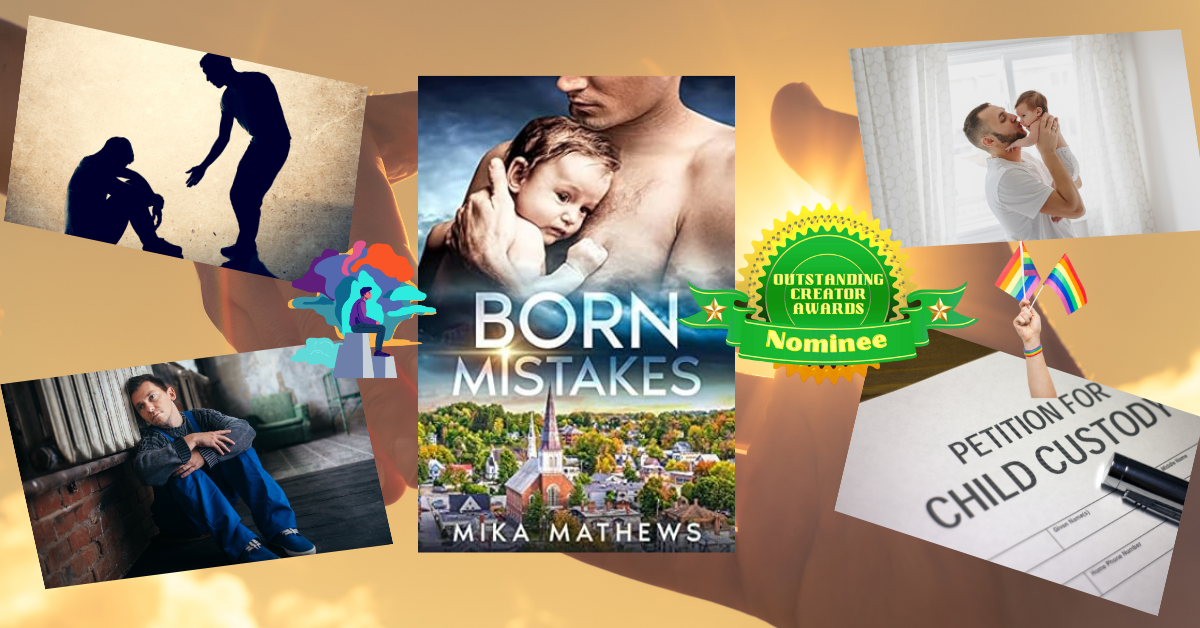
 RSS Feed
RSS Feed